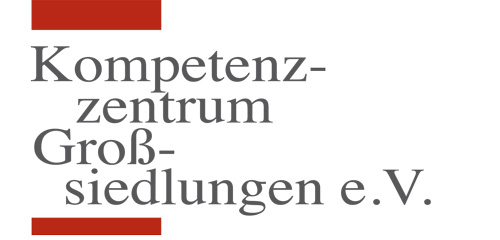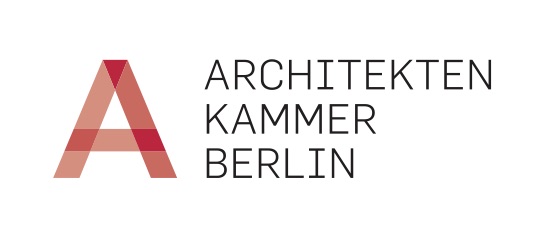Reservedness, Intellectuality, and Blaséness – Which Traits Promote Integration?

DQDS at bauhaus reuse, Berlin, 2017, © zukunftsgeraeusche
Prof. Dr. Martina Löw
In the fall of 2017, the discussion series “The Quality of the City” (DQDS) will focus on “The Performativity of the City – Emancipation and Integration in Urban Society.” The title, as can easily be seen, is based on Georg Simmel’s analysis of the great city as a place of spatial density of difference. This density produces integration challenges, but also releases the possibility to develop/emancipate oneself beyond too narrow social constraints.
It is well known that Simmel laid the foundations for the emergence of urban sociology and later urban studies with his text “Die Großstädte und das Geistesleben” (1903). As Johanna Hoerning and Gunter Weidenhaus point out in the Simmel Handbook (edited by Hans-Peter Müller and Tilman Reitz), Simmel works with both an anthropological-spatial and a historicizing-economic figure of argumentation in his analysis of large cities. Georg Simmel, who received his doctorate on Kant’s concept of matter and his habilitation on Kant’s doctrine of space and time, also introduces the concept of space as a basic concept in sociology with his fundamental essay on a “Sociology of Space” (1903). It is important to keep in mind that “Die Großstädte und das Geistesleben” and “Soziologie des Raumes” were written in the same year. Simmel, as Hoerning/Weidenhaus show, conceives of the big city both through the enforcing money economy, with which qualitative differences between things and between people are reduced to a quantitative exchange value, and through the spatial density of what is different, resulting in both an indifferent attitude and a new freedom. In 1908, Simmel inserts the text on the sociology of space in a slightly different way under the new title “Der Raum und die räumliche Vergesellschaftung” (Space and Spatial Socialization) in his book “Sociology. Untersuchungen über die Formen der Vergesellschaftung” (Sociology: Investigations on the Forms of Socialization) and thus introduces space as an essential form of socialization. Society arises, he introduces, when the isolated coexistence is shaped into forms. One form, by means of which individuals are combined into units, is space (in detail see Löw 2001, p. 58ff.). The mental step from the “city as a unit” (Simmel 1995, orig. 1903, p. 137) to the city as a spatially structural form, as it was later developed in the theorization of the Eigenlogik of cities, is only a small step (Berking/Löw 2008; on the relevance of Simmel for Eigenlogik research, see also Hoerning/Weidenhaus 2018). To this day, Simmel is regularly credited as the founding father of sociological spatial and urban analysis. There is no doubt that he elaborated the key sociological aspects of space, and his urban essay is also considered a sociological classic. In contrast, the fact that sociology owes Simmel the unification of the thematic fields of city and space has so far received less attention.
For Simmel, the metropolis is an expression of modern society, and space is an analytical approach to understanding modern society. In the – perhaps even more influential – Marxist urban sociology as represented by Henri Lefebvre, space itself becomes the product of modern societies together with the city (or the urban). Like Simmel, Lefebvre published a key text on the city, “La Révolution urbaine” (1970), and on space, “Production de l’espace” (1974). Lefebvre, as Ignacio Farias (2011) very aptly summarizes, does not seek the answer to the question of how advancing capitalism is organized in something – as might have been expected – in the reorganization of industrial production in cities, but “suggested that capitalism was undergoing an urban revolution, in the sense that the production of (urban) space, and not industrial production, was becoming the main process determining the advancement and functioning of capitalism” (Farias 2011, p. 367f.). Always had societies produced cities and in ways typical of society, new with capitalism was the “global and total production of social space” (Lefebvre 2014, orig. 1970, p. 165), which is an urban one. Lefebvre argues that in the 16th and 17th centuries, beginning with Galileo, people symbolically lost their place in the world and at the same time began to situate themselves in cities (Lefebvre 1991, orig. 1974, p. 272). “Space and time were urbanized” (ibid., p. 277). In parallel, colonialism begins the history of homogenization of space through spatial measurement and control. Capitalism takes possession of space. Lefebvre also speaks of the “homogeneous matric of capitalistic space” (Lefebvre 1991, orig. 1974, p. 227). Homogenization is followed by the complete urbanization of society. “The urban fabric begins to proliferate, expanding and devouring the remnants of rural existence” (Lefebvre 2014, orig. 1970, p. 9, italics in original). For Lefebvre, it is the state that exploits the rivalry of city and country by taking possession of both and then promoting the city (ibid., p. 18). For Lefebvre, the “rebirth of the logos” is a consequence of the “resurgence of the urban” (ibid.) – not the other way around. The city even develops its “own script: the plan” (ibid., italics in original). The consequence of the city’s projections onto the plan, which are increasingly transferred into a geometric coordinate system, is: “The idealistic and at the same time realistic gaze, the gaze of the spirit, of power, is directed onto the vertical, into the realm of cognition and reason, dominating and thus creating a whole: the city” (ibid., p. 19). Through the plan, the spatial idea of the city as a whole becomes a social reality.
Lefebvre, like Simmel before him, also works with the construction of form to describe the phenomenon of the city and urbanization. “The urban, then, is pure form: the point of movement, the place of a meeting, simultaneity. This form has no specific content whatsoever, but everything pushes toward it, lives in it” (ibid., p. 128). Since the city no longer shapes its own mode of production and life, Lefebvre often speaks of the urban rather than the city. This urban is tied to form, and through the form of the city, the urban is largely calculable, quantifiable, and plannable, except for the “drama that arises from the juxtaposition (…) of the elements” (ibid., p. 129). The heterogeneous, a necessary expression of the city, is firstly incalculable and secondly gives the city a specific content in each case. With the urban, society lives, so one can extend with Lefebvre the Simmelian tension between emancipation and integration, in the irresolvable contradiction between calculation/plan/quantity and not plannable, as chaotic experienceable, each specific heterogeneity. This is the contradiction, as I would also like to summarize the discussions in DQDS, which has to be shaped. It is inescapable if one wants to live in and with cities. If you give up this contradiction, you also lose the city, because it lives from the heterogeneity of its elements, which defy calculation.
Literature
Berking, H./Löw, M. (eds.) (2008): Eigenlogik der Städte. New directions for urban research. Frankfurt a.M./New York.
Farias, I. (2011): The politics of urban assemblages. In: City: analysis of urban trends, culture, theory, policy, action, 15:3-4, 365-374.
Hoerning, J./Weidenhaus, G. (forthcoming 2018): Simmel as forefather of urban sociology and urban studies. In: H.-P. Müller/Reitz, T. (eds.): Simmel-Handbuch. Concepts, major works, topicality. Berlin
Lefebvre, H. (2014, orig. 1970): The revolution of cities. Hamburg.
– (1991, Orig. 1974): The Production of Space. Cambridge/Oxford.
Löw, M. (2001): The sociology of space. Frankfurt a.M.
Simmel, G. (1995, orig. 1903): Sociology of Space. In: Georg Simmel Gesamtausgabe. Vol. 7: Essays and treatises 1901-1908. vol. I. (eds. R. Kramme, A. Rammstedt, O. Rammstedt), Frankfurt/M., pp. 132-183.
– (1992, orig. 1908): Sociology. Untersuchungen über die Formen der Vergesellschaftung, Gesamtausgabe Band II, complete edition volume II (ed. by O. Rammstedt). Frankfurt/M.
– Simmel, G. (1957; orig. 1903): Die Großstädte und das Geistesleben. In M. Landmann (ed.), Bridge and Door: Essays of the Philosopher on History, Religion, Art and Society, Stuttgart pp. 227-242.









